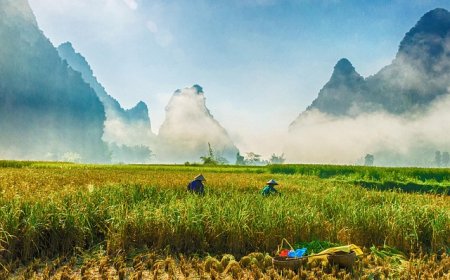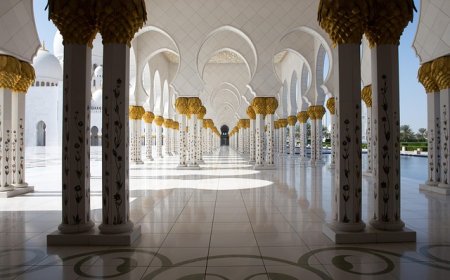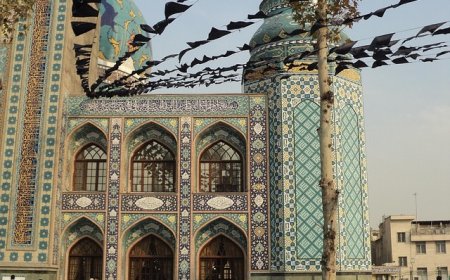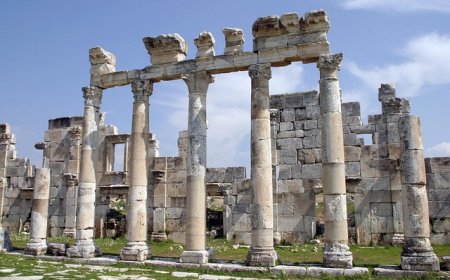Thailand Geography, History, and Culture of the Land of Smiles
Learn about Thailand’s culture, history, nature, and geography in this student-friendly article for ages 8–16. Includes a quiz, vocabulary, and national standards alignment.
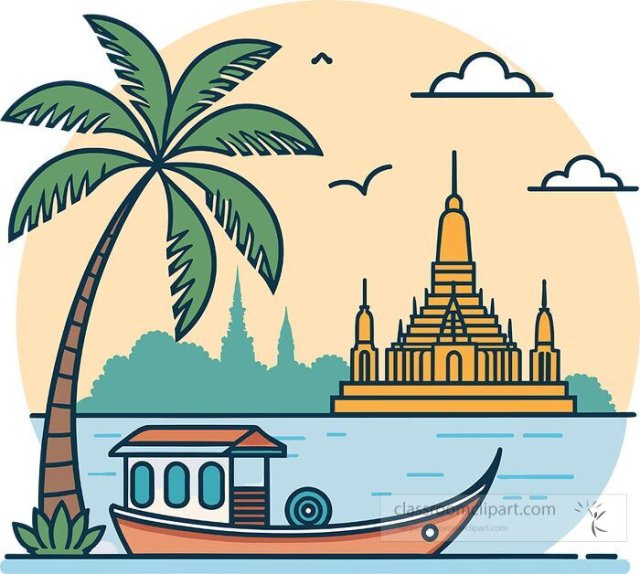
Introduction
Thailand is a tropical country in Southeast Asia known for its warm people, golden temples, and delicious food. Often called the "Land of Smiles," Thailand has a rich history, strong traditions, and incredible natural beauty. It’s a place where ancient ruins, busy cities, and peaceful beaches all exist in one colorful land.
More than 70 million people live in Thailand. They are known for being friendly, respectful, and deeply connected to their culture. With a mix of Buddhist beliefs, royal traditions, and modern life, Thailand is a country that continues to attract visitors, students, and explorers from around the world.
Geography and Landscape
Thailand is located in the heart of Southeast Asia. It shares borders with Myanmar, Laos, Cambodia, and Malaysia, and it has long coastlines along the Andaman Sea and the Gulf of Thailand. The country’s shape looks a bit like an elephant, with its “head” in the north and a long “trunk” reaching south.
The land is very diverse. In the north, there are forest-covered mountains and cool misty valleys. In the central region, often called the "rice bowl" of Asia, wide flatlands are perfect for growing rice. The southern part of Thailand is known for beautiful beaches, limestone cliffs, and tropical islands.
Thailand has a tropical climate, with three main seasons: hot, rainy, and cool. The rainy season lasts from May to October, bringing heavy but short-lived downpours that help grow crops.
Cities and Regions
The capital of Thailand is Bangkok, a giant and exciting city filled with markets, temples, tall buildings, and busy streets. It’s a place where you can visit a shiny golden palace one moment and shop at a floating market the next. The Grand Palace and the Temple of the Emerald Buddha are two of the most famous sites in the city.
In the north, Chiang Mai is a peaceful city known for art, crafts, and mountain scenery. People visit to learn traditional Thai cooking, see elephants, or attend the famous Yi Peng lantern festival, when thousands of glowing lanterns float into the night sky.
Southern Thailand is home to islands like Phuket and Ko Samui, known for soft beaches, snorkeling, and boat rides. Central Thailand includes ancient capital cities like Ayutthaya and Sukhothai, where you can walk among ruins of temples and statues from hundreds of years ago.
People, Language, and Culture
The majority of people in Thailand are ethnic Thai, but the country is also home to Chinese-Thai, Malay-Thai, and Hill Tribes, each with their own traditions. The official language is Thai, and the script is written with its own unique alphabet. Many people in cities also speak some English, especially in tourist areas.
Thailand is a constitutional monarchy, which means it has a king but also an elected government. The royal family is deeply respected, and pictures of the king are found in homes, schools, and shops across the country.
The main religion in Thailand is Buddhism, and temples, or wats, are found in every city and village. Monks in orange robes walk the streets each morning collecting food offerings. Buddhism teaches kindness, peace, and meditation. People also believe in good luck, karma, and honoring their ancestors.
Cultural traditions include Thai dance, music, muay Thai boxing, and Loy Krathong, a holiday where people float flower lanterns on water to make wishes and say goodbye to bad luck.
Food and Daily Life
Thai food is famous around the world for its bold flavors and fresh ingredients. Meals are usually a mix of sweet, sour, salty, and spicy. Rice is eaten every day, along with vegetables, meats, fish, and spices like basil, lime, and chili.
Popular dishes include pad Thai (stir-fried noodles), green curry, tom yum goong (spicy shrimp soup), and mango sticky rice for dessert. Thai people often eat with a spoon and fork, using chopsticks mostly for noodle dishes.
Daily life in Thailand is centered around family, school, and community. Most children wear uniforms and study hard, and respect for teachers and elders is very important. In the countryside, families grow rice or fruits. In the city, people work in shops, schools, offices, or street stalls. Many homes have small spirit houses, where offerings are made to protect the family.
History of Thailand
Thailand has a long and proud history. The region was once home to ancient kingdoms like Dvaravati and Srivijaya. Later, powerful Thai kingdoms like Sukhothai, Ayutthaya, and Lanna shaped the country’s art, language, and religion.
Unlike many Asian countries, Thailand was never colonized by a European power. This helped it keep its traditions and independence. In the early 1900s, Thailand (then called Siam) began modernizing its government and military. It changed its name to Thailand in 1939.
Today, Thailand is a mix of old and new. It continues to honor its history while also building new technology, growing its economy, and welcoming tourists from around the world.
Nature and Wildlife
Thailand is rich in natural beauty and wildlife. Its national parks protect animals like elephants, tigers, gibbons, leopards, and hundreds of bird species. The rainforests are full of colorful butterflies, snakes, and tropical plants.
The oceans around Thailand are home to coral reefs, dolphins, and sea turtles. Popular nature spots include Khao Sok National Park, Erawan Falls, and the Similan Islands, which are great for diving and snorkeling.
Sadly, some animals are endangered due to deforestation and illegal hunting. But Thailand is working on conservation programs to protect nature. Elephant sanctuaries, wildlife centers, and eco-tourism help people learn to care for the environment.
Vocabulary List
| Word | Definition |
|---|---|
| Monarchy | A government ruled by a king or queen |
| Wat | A Buddhist temple in Thailand |
| Pad Thai | A popular Thai noodle dish with peanuts, egg, and vegetables |
| Lantern Festival | A celebration where glowing lanterns are released into the sky |
| Muay Thai | A traditional form of Thai martial arts and boxing |
| Karma | The idea that good or bad actions lead to future results |
| Spirit House | A small model house where offerings are made to spirits for protection |
| Snorkeling | Swimming near the surface of the water to view fish and coral |
👧🧒 Kid-Friendly Summary
Thailand is a beautiful country in Asia with temples, beaches, and friendly people. It’s warm all year and full of fun foods like noodles, mango, and spicy soup. Thai people speak their own language and celebrate cool holidays with lanterns and music.
Many people follow Buddhism and visit temples to pray or give food to monks. You can see elephants, explore old ruins, and swim in the sea. Thailand is a happy, colorful place with lots to see and taste!
🧠 Interactive Quiz: What Do You Know About Thailand?
1. What is the capital of Thailand?
A) Chiang Mai
B) Bangkok
C) Phuket
D) Ayutthaya
2. What religion do most people in Thailand follow?
A) Islam
B) Christianity
C) Buddhism
D) Hinduism
3. What is pad Thai?
A) Fried rice
B) Stir-fried noodles
C) Soup
D) Mango dessert
4. What is a wat?
A) A street market
B) A Thai festival
C) A Buddhist temple
D) A rainforest animal
5. What is the Lantern Festival in Thailand called?
A) Songkran
B) Yi Peng
C) Chuseok
D) Holi
6. What kind of animal can you see in Thai national parks?
A) Penguins
B) Kangaroos
C) Elephants
D) Polar bears
7. What do many Thai homes have for spiritual protection?
A) Temples
B) Spirit houses
C) Statues
D) Flags
8. What is muay Thai?
A) A fruit salad
B) A festival
C) A martial art or form of boxing
D) A dance style
📘 National Standards Alignment
National Geography Standards (NCGE):
-
Standard 1: Locate Thailand and describe its physical and human geography
-
Standard 4: Explain how geography influences farming, tourism, and traditions in Thailand
-
Standard 10: Explore cultural expressions including religion, food, and arts
NCSS C3 Framework:
-
D2.His.2.6-8: Analyze Thailand's history, including its independence and cultural evolution
-
D2.Geo.4-8.4: Investigate how land and resources influence population and economy
-
D2.Civ.2.6-8: Describe the role of monarchy, religion, and tradition in Thai life
Common Core ELA Standards (Grades 5-8):
-
RI.5-8.2: Determine central ideas and summarize them
-
RI.5-8.4: Clarify vocabulary using context clues
-
W.5-8.2: Produce informative, clearly organized text
-
SL.5-8.1: Engage in collaborative discussions and presentations


















































